#yolngu
Text
ABORIGINAL AUSTRALIAN RESOURCES
The Anthropological Masterlist is HERE.
The Aboriginal Australian people are the indigenous peoples of Australia and the Torres Strait Islands.
ADNYAMANTHA ─ “The Adnyamathanha people are an Aboriginal Australian people. They are native to the northern Flinders Ranges.”
─ Plants in Adnyamantha Culture
ARRERNTE ─ “The Arrernte, or Aranda, people are an Aboriginal Australian people. They are native to the Arrernte land in central Australia.”
─ Arrernte Information
─ Arrernte Language
BUNDJALUNG ─ “The Bundjalung, or Bunjalung, people are an Aboriginal Australian people. They are native to the northern coast of New South Wales.”
─ Bundjalung Migration
KAMILAROI ─ “The Kamilaroi, or Gamilaraay, are an Aboriginal Australian people. They are native to New South Wales and Queensland.”
─ Kamilaroi Culture
─ Kamilaroi Language & Traditions
─ Kamilaroi Astrology
NGARRINDJERI ─ “The Ngarrindjeri people are an Aboriginal Australian people. They are native to the lower Murray River in southern Australia.”
─ Ngarrindjeri Information
─ Ngarrindjeri Culture
NOONGAR ─ “The Noongar, or Nyunga, people are an Aboriginal Australian people. They are native to southwest Western Australia.”
─ Noongar Culture
─ Noongar Language
─ Western Australian Language
TIWI ─ “The Tiwi, or Tunuvivi, people are an Aboriginal Australian people. They are native to the Bathurst and Melville islands.”
─ Tiwi Information
─ Tiwi Language
─ Tiwi Music
YOLNGU ─ “The Yolngu, or Yolŋu, people are an Aboriginal Australian people. They are native to the northeastern Arnhem Land.”
─ Yolngu Culture
─ Yolngu Printmaking
#resources#aboriginal australian#adnyamantha#arrernte#bundjalung#kamilaroi#ngarrindjeri#noongar#tiwi#yolngu
18 notes
·
View notes
Text
At this uncertain moment, I offer a bloody family saga from the frontier in the hope of us one day reaching the ultimate goal set at Uluru: the coming together after struggle, Makarrata.
"Killing for Country: A Family History" - David Marr
#book quotes#killing for country#david marr#nonfiction#uncertain#family history#frontier wars#uluru statement from the heart#makarrata#yolngu#phenomenal book#such a hard read but so important#every Australian should read it#australian history
0 notes
Text
0 notes
Text
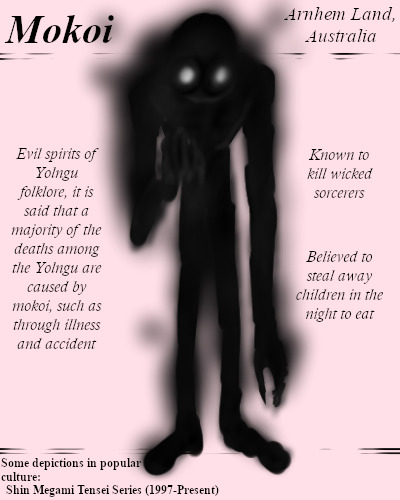
A fearsome evil spirit, he kills sorcerers and causes death in the Yolngu community.
#BriefBestiary#bestiary#digital art#fantasy#folklore#legend#myth#mythology#monster#mokoi#evil spirit#australian folklore#australian legend#yolngu folklore#yolngu legend
10 notes
·
View notes
Text
What is Aboriginal Cross-culture Awareness Training?
We are common becoming increasingly conscious of the call to be conscious of different cultures and even the Aboriginal culture is not any different. Depending on your working environment and sometimes your social circle may determine from what lengths you should head to, being completely mindful of different cultures. This is where cross-cultural awareness training comes in invaluable particularly if it is required in an operating environment.
To use it simply, Cross Cultural Awareness is the ability to disappear from ourselves and still have a knowledge and comprehension of the cultural values and customs of other cultures. You will find this across all cultures, as an illustration, the culture that we have in Australia is very different to that in say Japan. What is acceptable and normal practice in one culture could possibly be unusual as well as offensive in another which is something that we always have to be alert to. When it comes to the Aborigines we want an awareness and respect of the different value systems passed in Aboriginal and Torres Strait Islander culture, in terms of family, land, sea and heritage.
It is only natural a large number of people are stuck as to what would commonly be referred to as our safe place. Cross cultural awareness brings us away from that comfort zone and challenges not merely our own attitudes but that regarding others. It involves altering mindsets and changing people misconceptions and consequently, it's going to bring communities and cultures closer together. In reality this generates a better environment for anyone to call home and sometimes breaks down barriers that quite simply, really should not be there.
When you participate in a training program you will see how to communicate effectively with Aborigines, understanding their culture, their society and their beliefs. There are certain "Aboriginal Protocols" that should be observed, something very few people would be mindful of as they would view it to be a long way away from the norm. This is one area that you would learn during the learning a workshop.
So, what's going to you learn?
Firstly, you'll want to understand their culture so that you could become aware of it. Aboriginal Kinship then has to be understood simply because this will help you to appreciate far more why things are done. This will unquestionably transform your knowledge and understanding then when tied in with key historical events that have happened in Australia during the last 250 years you will get a deeper understanding.
Of course, once you've this understanding it will be possible to match and contrast lifestyles and understand what is unique to the Aboriginal culture. This will include social determinants and Aboriginal overall health let alone their own language and strategies to communication. Finally, cross cultural communication training is possible to spot strategies to moving for forward and extracting more barriers in the foreseeable future, it mat be preventing these barriers from being set up to begin with.
#indigenous cultural awareness training#aboriginal cultural awareness training#cultural awareness training#cross cultural communication training#cultural competency training#learn Yolngu culture courses#cultural Awareness courses#aboriginal culture courses#Australian indigenous culture courses#learn aboriginal culture courses
0 notes
Text
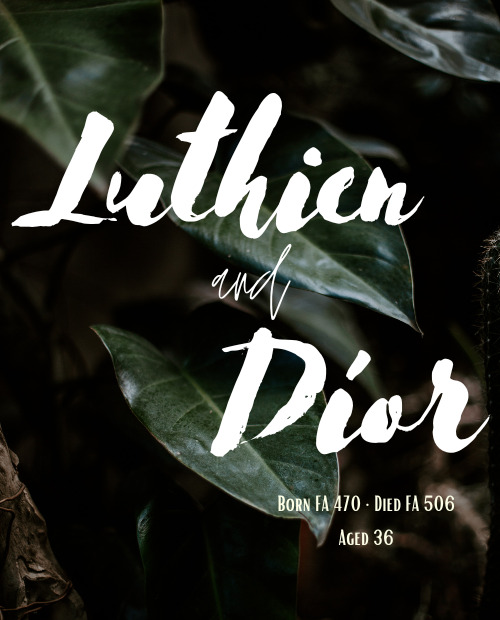
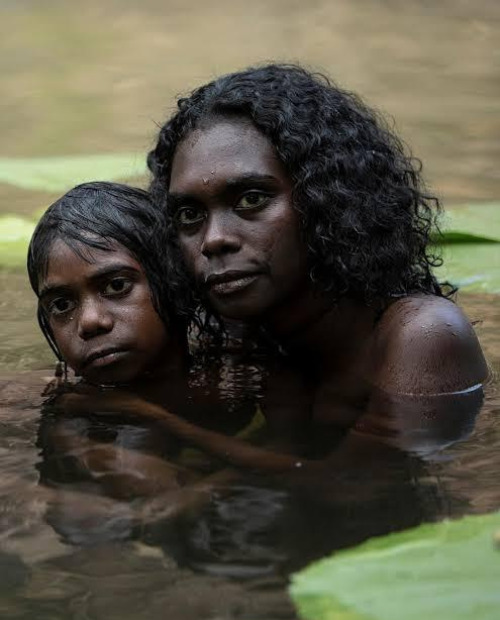
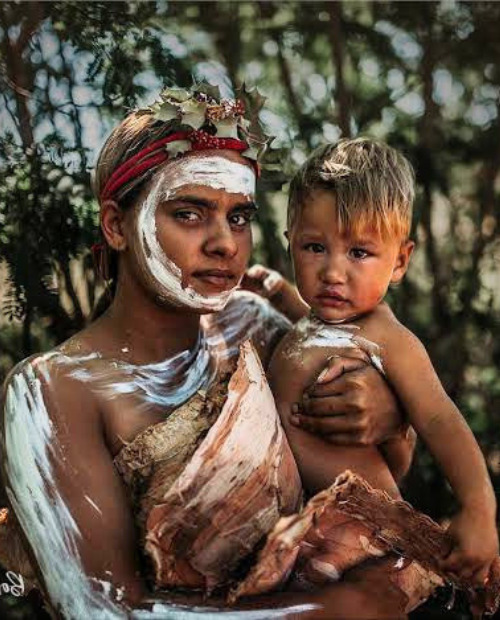
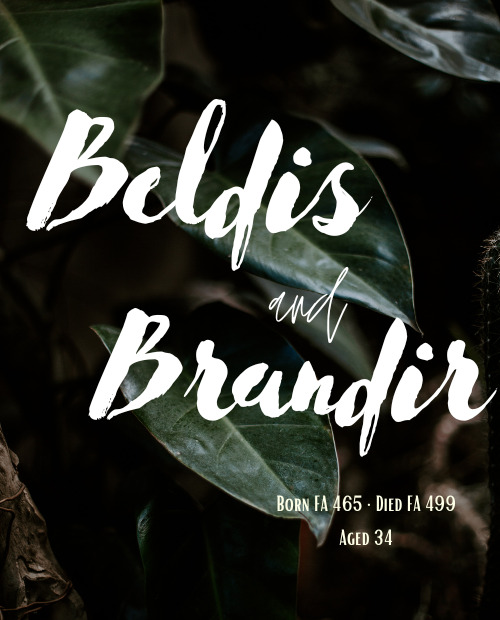


born into a time of hope, children when the Nirnaeth came, doomed by fate
For @tolkiengenweek
Part 20 of toi's indigenous tolkien series
[Image description
1: Leaves and text 'Luthien and Dior" "Born FA 470, Died FA 506, Aged 36"
2: Yolngu woman Magnolia Maymuru in water holding a Aboriginal boy
3: A Banjima woman holding her child
4: Leaves and text 'Beldis and Brandir" "Born FA 465, Died FA 499, Aged 34"
5: Leaves and text 'Morwen and Turin" "Born FA 464, Died FA 499, Aged 35"
6: a Ngarla woman holding her baby.]
#luthien#dior#morwen#turin#beldis#brandir#silmarillion#tolkien women of colour#blak australian tolkien#moodboards and edits#toi's indigenous tolkien series#toi's creations#mepoc#tolkiengenweek#contains image description
98 notes
·
View notes
Text
MAAF & The Stolen Generations
It’s NAIDOC week y’all which has reminded me of that busted ass comic page, ‘MAAF’, specifically chapter 9. For the most part I’m sure this comic is a cool exploration of Indonesia and Australia but chapter 9 (in the author’s own words) includes a part regarding the Stolen Generations wherein, “Yolngu (Australia) became white and lost his memory”. I may sound a little harsh towards this author but I think they did have good intentions and poor execution of this concept. For context, I myself am the grandchild of a stolen child and so I do take issue when this subject is handled poorly.
Warning: This may include the images and names of Aboriginal and Torres Strait Islander people who have since passed.
This is a fair warning that this will be long but I’m going to share some information on the subject to hopefully convey my grievances with the comic chapter. This will be upsetting and triggering at times so keep in mind this involves the kidnapping and abuse of children. To start, below is a summary of the philosophy behind the Stolen Generations.

This image shows how the Stolen Generations was intended to work. You take an Aboriginal child from their home who has a white parent, referred to as the dated terms ‘Half-Caste’ or ‘Half-blood’. Then that child goes on to procreate with a white person to produce a child with more ‘white blood’, then that child is usually taken themselves and repeats the process until you end up with a child who is of ‘white blood’. This process was often referred to as ‘breeding out the black’ or ‘breeding out the colour’, which was heavily based on blood quantum and phenotypical features. Western Australia’s Chief Protector of Aborigines (1915-1936) and Commissioner for Native Affairs (1936-1940), A. O. Neville (also known as ‘Mr.Devil’ by Aboriginal people), is pictured below.
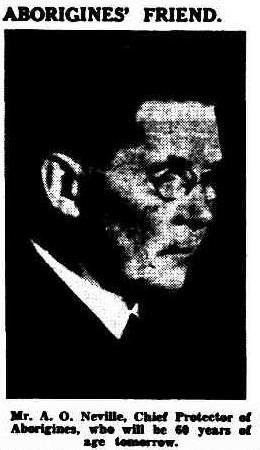
He is quoted as saying:
"[T]hey have to be protected against themselves whether they like it or not. They cannot remain as they are. The sore spot requires the application of the surgeon's knife for the good of the patient, and probably against the patient's will."
This epitomises the justifications of ‘biological assimilation’ that the orchestrators and supporters of the Stolen Generations often used to continue this cycle (officially) for almost one hundred years from the mid-1800s to the 1970s*.
(*Indigenous children were also unofficially wrongfully taken by child services and placed in white homes or institutions beyond this date, I recommend watching After the Apology (2017) for some of this.)
But where were these children taken to exactly?
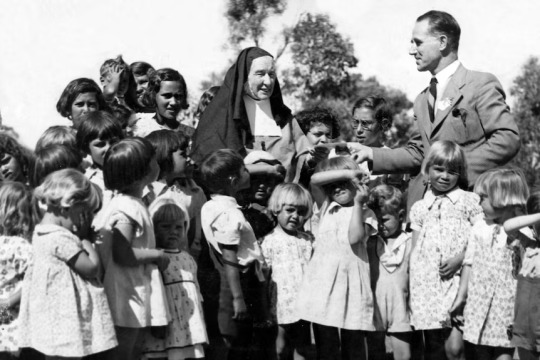
They were called missions and were typically Catholic but could be run by other Christian denominations such as Lutherans. Children essentially grew up being forced into practising the religion of the institution they were placed in. The abuses that happened in these institutions were prolific and entailed the attempt at a total loss of connection to Indigenous families, cultures and languages. Specific examples of the conditions of many of these missions include stories of harsh abusive punishments, maggots in the food, and sexual abuse. Many children were taken in infancy or at very young ages, some taken directly from hospitals they were just born in, either never knowing their families or knowing very little of them and being subjected to these abuses their entire lives leading up to adulthood.
I would recommend watching The Rabbit Proof Fence (2002) for a little more of an introductory ‘visual example’ of how missions typically looked and ran, albeit much more watered down than what the lived reality was. For that, I suggest seeking out the stories of former stolen children.

Now maybe just with that background you can see my grievances with chapter 9 of MAAF but I’ll just spell it out. I take major issue with depicting Australia as literally turning from Yolgnu to a white man as a result of the Stolen Generations - taken children were and always will be Aboriginal and taken children still always belonged and continue to belong to their family’s language groups. Tangentially, just to cover all bases here, I also take issue with implying light skinned Aboriginal people aren’t Aboriginal because of the same history but MAAF quite literally TURNED A YOLGNU MAN INTO A WHITE MAN? As stated by the author themself - so I don’t believe they were making an astute commentary on how really light skinned Aboriginal people will always be Aboriginal, I think instead it’s exactly what it looks like.
I can’t control what content people choose to make, and I’m not necessarily totally against using the medium of Hetalia fanworks to discuss historically sensitive subjects either. However, I will just say this - Please consider the work you make public, because these sensitive issues have affected real people who might come across that work. I've seen a similar handling of Canadian residential schools in the Hetalia fandom which was a very similar concept to the Stolen Generations in Australia, and of course, these depictions have also fallen short by depicting this as a literal 'white metamorphosis' of Indigenous children. To convey just how much this has bothered me, chapter 9 of MAAF is frankly my version of one of those probably well meaning but still super insensitive 9/11 America fanfictions that just come off gauche. I suppose I just hope people now have the tools to look at these depictions a little more critically than the fandom historically has?
Anyways, that's mostly it. See ya.
EDIT: Some text got lost when I copied it over from another document so I've added the missing text again.
EDIT 2: I've also seen a lot more stuff from MAAF and the artist even regarding some questionable choices regarding the interpretation of SEA Indigneous peoples and North American Indigenous peoples, so yeah, MAAF and the artist themselves probably aren't the most reliable sources out there in terms of the interpretation of Indigenous peoples GENERALLY speaking... 😅
ANYWAYS - Thank y'all for showing interest in this post, I'm very passionate about sharing information on the Stolen Generations and hopefully using my unique perspective for some good.
#hetalia#hws#hetalia fandom#historical hetalia#hws australia#hws indonesia#aph australia#hetalia australia#aph indonesia#hetalia world stars#hetalia axis powers#aph#fandom rant#big brain michi#tw sensitive content#hws canada#hetalia fanart#hetalia fanfiction#hetalia critical
103 notes
·
View notes
Text
#Woodensday:

Peter Wadaymu Ganambarr (1930-1997) - Yolngu, Ngaymil clan, Dhuwa moiety
Bark Painting showing Wititj at Garrimala, c.1968-71
Galiwin'Ku, Australia
Bark, pigments 56 x 23.8 x 0.8 cm
On display at Baltimore Museum of Art
Wititj = the sacred rainbow serpent (olive python)
#australian art#animals in art#museum visit#20th century art#Aboriginal art#Indigenous art#Baltimore Museum of Art#painting#bark painting#Woodensday#Peter Wadaymu Ganambarr#rainbow serpent
21 notes
·
View notes
Text
I was looking at the constellation Orion and thinking how it always looked like a butterfly to me in my light polluted area, and thought I'd love to know what people see. I've done my best to look up how different cultures view it too. I already knew about The Deer but I'm finding others too, apologies if I missed any.
Please note, I included constellations that use part of the traditional Orion, or include Orion and other stars for their constellation.
Please reblog for more votes, thanks! C:
15 notes
·
View notes
Text
"Mr Guyula says his community is watching the government's moves very closely, and fear a repeat of the decisions that he says are to blame for the current problems.
"This is a big mess... People are worried," he said.
"I've always said, the crime that is happening, the alcohol that is being drunk... it was created by the Intervention.
"I call our young teenagers that are involved in crime the 'children of the Intervention.'"
He believes the true solution lies with the knowledge and decisions of Aboriginal leaders and Elders in the territory.
"We are calling 'stop, turn around, come and see us, come and talk to us'. We know what is best for our children," he said.
Mr Guyula says many were disappointed that no space was created for community to take leadership.
"The Australian government keep forgetting, First Nations people are a sovereign nation... Come and sit down with Elders and leaders in communities. They are the decision-makers.
"They don't make a decision way over there in Canberra. That's where the intervention came from... and now they're going to create something similar about the issues that they see now.""
12 notes
·
View notes
Text
Richard Trudgen, the distinguished scholar of the Yolngu, records a poisoning on the station in 1885.
The pastoralists came with one of their wagons, offering horsemeat to many of the clans . . . That evening they ate, thanking the pastoralists for their good gifts. It was only when some of the became violently ill that the Yolŋu realised the Balanda had tricked them with some strange sorcery . . .
Members of many clans died that day . . . Yolŋu struck back, fighting with spears against muskets and carbines.
"Killing for Country: A Family History" - David Marr
#book quotes#killing for country#david marr#nonfiction#richard trudgen#scholar#yolngu#poisoning#florida station#nt#northern territory#80s#1880s#19th century#pastoralists#wagons#horse meat#gift#poisoned#illness#indigenous australians#aboriginal australian#death#spear#fighting back#musket#carbine
0 notes
Text
3/8/23 Darwin, NT
She comes to me in the dead of night
I wake to the sound of steps on the verandah
and I reach for the knife under my pillow.
Dingos can't pull zippers or at least I don't think they can
and when I open my eyes she's standing there
an old AC/DC singlet, tied in the front, bare midriff showing
neon green bumshorts with a white stripe down the side, barefoot.
She comes to me wordless, opens my mozzie net
and is hasty to shut it behind her.
The lantern she carries, a red battery-powered thing
accentuates the curve of her chest with its shadows
the daintiness of her fingers
the pink skin on her palms and where it fades to brown
I can see her hair is still damp from wurlebme
because she mourned with me.
She kneels at my side, not a word said
and rests her hand on my bare chest.
Her fingers brush my scar
the intimate part of me only she has touched
and when she leans in to kiss me — slow, like I'll break
I don't protest.
Her lips are full, and soft, and warm
and my hands rise to hold her face.
I get lost between her legs.
Fevered kisses and whispers and sweet nothings
her hands on my skin, mine on hers
touching her scars the way she's touched mine
we're breathless when we part, free-floating.
She sits against the railing of the verandah
my head in her lap, her hands in my hair.
She strokes my beard and throat and I don't flinch
unbothered by her closeness.
I stargaze
I tell her about Dhinawan, bedded down on the horizon
how south of here people use him as a guide
to eat the eggs on the ground instead of pursuing.
I tell her of the Yolngu men that ate sawfish
and were thrown into the sky by the Sun-woman as punishment
and became Orion's belt.
I tell her of fires burning on the banks of the Milky Way
of eclipses being the Moon-man making love to his wife.
We spend an hour like this, time unwasted.
She falls asleep at some point and I tell her of my adventures
of the places she's never been
because Kakadu is her home just as it's mine.
I tell her of the ocean
of milky seas that glow when you swim through them
of whales breaching off the bow of a ship
of hearing them when you dive for oysters.
I tell her of Outback nights
how the stars are the clearest you'll ever see
how sweet quandong tastes
and I promise to bring her some next time I'm here.
When I wake in the morning she's gone home
but for a night I laid at her side
and ran my fingers through her sweat-damp hair
and fell into her eyes
and her touch
and her smile
and the way she said my name.
I don't see her again before I leave
but she's on my mind the entire morning I'm fishing with my brother
and when I'm showing him how I've slacked up on my mustering.
at supper my sister gossips to me on events in our mob
but my thoughts are still on her
the girl who fancies herself my mararradj.
4 notes
·
View notes
Text
It's rather bitterly amusing to see people express horror and disgust at the Israeli state's efforts to use Modern Hebrew as a national language, especially in the discouragement and suppression of Yiddish, while not really grasping that the majority of people speaking Yiddish in Palestine in the first half of the 20th century were people they'd describe as colonizers. (There were some Hasidic communities that arrived in the 18th and 19th centuries, but they were far outnumbered by Ladino and Arabic speakers.)
Very frankly, Yiddish, Ladino, Judeo-Arabic dialects, and other Jewish languages only exist because of the historical status of Jews as oppressed minorities who had to adapt the language of the people around them to their own uses rather than continuing to speak Aramaic and Hebrew. So the Zionist efforts to reconstruct Hebrew should be understood with that in mind- the purpose of the Zionist project in the 19th century was to establish autonomy for Jews and part of that was the adoption of a Jewish language that was also autonomous. And hostility towards other Jewish languages should perhaps be understood as similar to the hostility towards the use of English that you can find in much indigenous literature, rather than as a dastardly scheme to annihilate the cultures of the diaspora.
Most people who articulate anti-Zionist Jewish identity tend to argue, explicitly or implicitly, that Jewish identity and culture don't need any independence from surrounding, frequently hostile cultures, and that's fine and all, but it's probably worth thinking through the implications of this for other people in similar situations and why Jewishness would be different from Cherokeeness or Mapucheness of Yolnguness.
3 notes
·
View notes
Text
Australian Aboriginal Art Exhibited by Internationally Renowned Aboriginal Artists
The great thing about art goes past time and space. It doesn't discriminate on race, age, gender, language or culture. This is very true with Australian Aboriginal art. The traditions with the Indigenous Australians are colourfully blended and interwoven into striking strokes to mention a rich culture. What makes Australian Aboriginal art very rewarding is the place where the Aboriginal folks have shared their long artistic traditions using the non-Indigenous society. Aboriginal art is a creative revelation of the past, life, culture and tradition. aboriginal culture courses of contemporary Aboriginal art is the presence of the traditional symbols, which use conventional designs which may have cultural or religious significance or power.
The Butler Goode Gallery Exhibits Australian Aboriginal Artists
The indigenous behaviour, beliefs, rituals and life are typical told in a story that only art can express. The Butler Goode Gallery trust the benefit and depth of the artistic expression, this is exactly why they exhibit the enriching and captivating realm of Aboriginal art of their gallery. They boast an easy portfolio of artwork painted by up-and-coming and well-established artists. Here are some in the amazing artists featured in their gallery:
Anna Petyarre
Commenced painting noisy . 1980s
Included in several art collections in galleries and museums in Australia and other private and corporate collections in USA, Germany, Denmark, Poland and Italy
Joined art exhibitions around Australia along with USA and France
Barbara Weir
Daughter from the late famous Aboriginal artist Minnie Pwerle
Commenced painting in 1989
Developed a sophisticated contemporary painting style
Travelled to Indonesia to understand batik techniques
Travelled to Europe to demonstrate her artworks
Included in various art collections in galleries and museums in Australia, The Netherlands
Joined art exhibitions in Australia, Singapore, Korea, USA and countries in Europe
Charlie Tjapangati
Senior Papunya Tula artist; one in the leading Papunya Tula Pintupi artists whose artworks are sought by collectors worldwide
Chris Wirriimbi Edwards
Descendant from the Gumbaynggir people
Developed an exceptional design of painting where he mixes sand coming from a sacred beach in Nambucca Heads with modern materials like acrylic paint
His artwork is deeply spiritual
His unique method of depth and form makes him certainly one of Australia's most popular emerging Aboriginal artists
Dorothy Napangardi
Featured in exhibitions throughout Australia, USA and Europe, where she actually is deemed one from the leading artists in the contemporary Aboriginal art movement
Highly sought after by both collectors and curators worldwide
Won the Best Painting in European Media within the 8th National Aboriginal Art Award in 1991 along with other awards in several art exhibitions
Featured at The Australian Council; the Linden Museum in Stuttgart, Germany; and Kelton Foundation in Santa Monica, USA
Emily Kame Kngwarreye
Her first solo exhibition of paintings on canvas is at 1990 at Coventry Gallery, Sydney
Her pure talent with colour gave her instant recognition from art critics and collectors
Awarded the Australian Artists Creative Fellowship with the Australian Federal Government
Her paintings are permanently displayed in public areas galleries
Showcased in many exhibitions worldwide
These artists and many more always bring forth "Dreamtime"-inspired Aboriginal art throughout Australia and in the world. Aboriginal art won't ever fade because The Butler Goode Gallery will assure that well-established and emerging Aboriginal artists get showing their help collectors and art enthusiasts worldwide.
#indigenous cultural awareness training#aboriginal cultural awareness training#cultural awareness training#cross cultural communication training#cultural competency training#learn Yolngu culture courses#cultural Awareness courses#aboriginal culture courses#Australian indigenous culture courses#learn aboriginal culture courses
1 note
·
View note
Text
The Dhupuma Studio Secondary School for Yolngu Students
The Yothu Yindi Foundation works to improve the lives of the Yolngu people in Australia. The foundation has partnered with a secondary school for Yolngu students which offers quality education and cultural programs.
The foundation also provides scholarships to Yolngu students so they can pursue further education, as well as mentorship programs, and cultural exchange opportunities. These initiatives are designed to empower young Indigenous Australians and help them reach their full potential.
The foundation's work is highly appreciated in Australia and it has been recognized for its commitment to promoting genuine and equal partnership between Indigenous and non-Indigenous Australians.
#Yolngu Students#yothu yindi foundation#australia#community#indigenous#secondary school for Yolngu students
0 notes
Photo
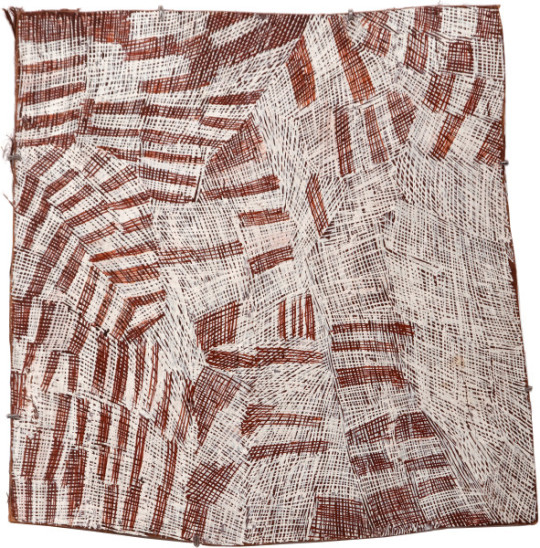





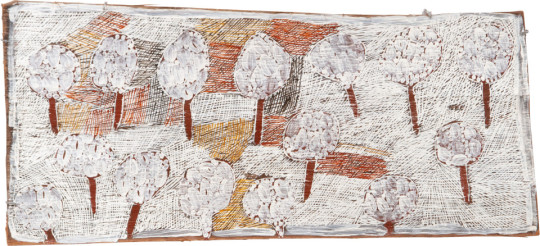



NYAPANYAPA YUNUPINGU (c.1945-2021)
Gumatj Clan, Yirrkala, Australia
Nyapanyapa Yunupingu lived and worked in Yirrkala, near Nhulunbuy in north-east Arnhem Land, and was a Yolngu woman with a rich artistic genealogy, including musicians Mandawuy Yunupingu of Yothu Yindi and Geoffrey Gurrumul Yunupingu, and the Gumatj patriarch and artist Munggurrawuy Yunupingu. Yunupingu’s art practice remains independent of bark painting traditions of the Yirrkala region/ Yolngu people of Arnhem Land. Yunupingu’s work is valued for the spontaneity and texture of her draughtsmanship. Her figurative and abstract works unleash a unique set of personal narratives revolving around her own experiences. She also employed unconventional materials such as texta-pen on clear acetate sheet, recycled paper and board during the dry season when the supply of bark runs low. While the impression is recognisably Yunupingu, the finish and texture create a fascinating reconfiguration of her distinct visual language.
17 notes
·
View notes